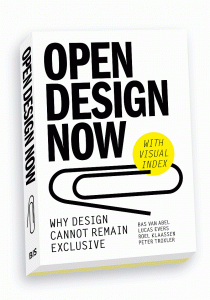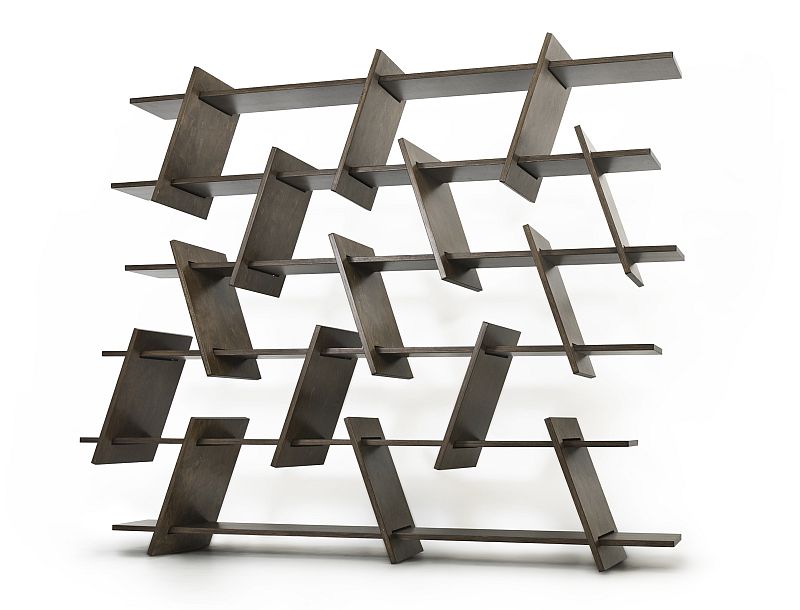The Internet may not, as yet, have been able to provide us with a free lunch; but it has given us free software, music, photos and videos.
But more importantly it has given us not only the means and methods by which we can share what we do, but also to alter what other people do so that it fits our requirements.
And if the authors and editors behind "Open Design Now: Why Design Cannot Remain Exclusive" are to be believed - what is now an everyday norm in digital media will soon become just as normal in product design.
Although its been around for over two decades "Open Design" is only now starting to slowly filter through to a wide enough public that it can be considered to be approaching a critical mass. And relevancy.
And with "Open Design Now: Why Design Cannot Remain Exclusive" we have the first attempt at bringing together the ideas, concepts and visions involved into one coherent discussion.

In essence Open Design involves a "designer" making their "design" available online. For free. For everyone. "Users" can then download the design and make the product, or adjust it to suit their own requirements.
A friend who flicked through Open Design Now posed the valid question "What's the difference to DIY ?"
It is DIY. Or at least DIY2.0
As several authors in "Open Design Now" say, in days of yore all products were created by similar, if analogue, methods. Then - in the North at least - came industrialisation and prosperity with the result that we not only lost access to the means by which to create the products we wanted. But didn't have to as we could afford to buy them.
Now however with cheap laser cutters, 3D printers and CNC cutters anyone can make anything and so we now have DIY2.0. Open Design.
DIY1.0 still exists. DIY2.0 simply extends it. Or perhaps better put, reclaims ground lost to industrialisation.
The more observant readers will have noticed that CNC cutters, 3D printers and laser cutters don't solve the ".... we could afford to buy them." point. We'll get to that in minute.
Open Design Now: Why Design Cannot Remain Exclusive works on many levels. On the one hand it is a nice introduction to the topic for lays, answers the obvious questions such as "Why ?" and "How ?" without being dogmatic and insisting that the arguments presented are correct. You're allowed to disagree and find it absurd if you want. And secondly it provides deeper discussions on more specialised subjects for all those with a little more experience.
What it doesn't directly tackle is the "OK that all sounds brilliant, but where's the advantage for ME?" question.
Yes, it explains that you can go to a FabLab and laser cut a new side table. But who is going to?
Not even droog supremo Renny Ramakers. As we learn on page 132.
Its similar to cooking a curry - most of us can knock up a decent curry. But when push comes to shove the majority of us opt for a ready-made sauce or a take away. Only occasionally making the effort to produce our own.
We don't see Open Design as being any different: It will remain a domain for enthusiasts and those looking for an alternative to IKEA and their ilk.
Which isn't to knock the idea. Were huge fans and convinced that it will take on an ever bigger and more important role; but it wont revolutionise the designer furniture industry per se. Or at least not as much as some of the authors in Open Design Now hope.

Which isn't to say that the industry should ignore it. Far from. To ignore it would be foolish.
Open Design creates interesting new distribution methods for producers, provides ways to save money and resources, as well as providing a way to "beta" objects ahead of serial production.
And don't forget ".... we could afford to buy them." Just because the plans for the latest Ron Arad table can be downloaded for free, doesn't mean that customers will. A majority will prefer to have a ready made copy delivered. And pay for the privilege.
But more importantly Open Design means that designers are no longer so reliant on a producer as they are now. They can operate independently and ever more designers are choosing to do so.
And no producer wants to miss out on the next Bouroullec, Grcic or Diez simply because they insist on sticking rigidly to outdated payment models. And so they need to understand the possibilities in Open Design and make sure that they can harness them.
"Open Design Now: Why Design Cannot Remain Exclusive" provides a few starter tips.
And for all interested in product design a wonderful and thought provoking excursion into another reality where the designer is our friend and helper rather than an all-knowing, all-seeing deity.
As for us, we can't wait to be able to 3D print our lunch .....
Open Design Now: Why Design Cannot Remain Exclusive is published by BIS Publishers, and is also available as an Open Source online book @ opendesignnow.org